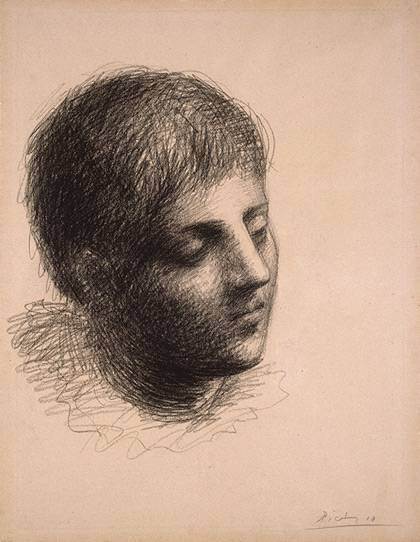
Drunken Satyr, 1st century BC – 1st century AD, Roman. Bronze, H: 137 cm. Museo Archeologico Nazionale di Napoli, inv. 5628. Reproduced by agreement with the Ministry of Cultural Assets and Activities and Tourism. National Archaeological Museum of Naples – Restoration Office.
The ‘Villa dei Papiri’ at the Getty ‘Buried by Vesuvius: Treasures from the Villa dei Papiri’: exhibition at the Getty Villa features rare original artifacts from the Museo Archeologico Nazionale di Napoli, Parco Archeologico di Ercolano, and Biblioteca Nazionale ‘Vittorio Emanuele’ di Napoli. June 26 to October 28, 2019.]]>
Source: Getty Villa
The Getty Villa is modeled on the Villa dei Papiri at Herculaneum, an ancient Roman villa buried by the eruption of Mount Vesuvius in AD 79. Rediscovered in the 1750s and explored further in the 1990s and early 2000s, the Villa dei Papiri has yielded spectacular colored marble and mosaic floors, frescoed walls, a large collection of bronze and marble statuary, and a unique library of more than a thousand papyrus scrolls (from which it gets its name). On view June 26 to October 28, 2019, “Buried by Vesuvius: Treasures from the Villa dei Papiri” presents many of the most significant artifacts discovered in the 1750s, along with recent finds from the still active archeological site, and explores ongoing efforts to open and read the badly damaged papyri.
The Villa dei Papiri was a sumptuous private residence on the Bay of Naples, just outside the Roman town of Herculaneum. Deeply buried by the eruption of Mount Vesuvius in AD 79, it was rediscovered in 1750 when well-diggers struck a spectacular circular multi-colored marble floor that belonged to the luxurious Roman villa (a full-scale replica of this floor decorates the Getty Villa’s Temple of Hercules gallery). Under the sponsorship of King Charles VII, Karl Weber, a Swiss military engineer in the royal guard, was entrusted with excavating the site. Weber directed a crew of conscripts and convicts to dig a series of shafts and tunnels to seek and remove the most impressive finds to augment the collections of the recently established Royal Herculanean Museum. Although his superiors were chiefly interested in recovering artifacts to enhance the royal collections, Weber carefully recorded their findspots and architectural contexts.
Weber’s excavation plan of the Villa dei Papiri, on display in the exhibition, provides detailed evidence for the layout and decoration of the building, including discovery dates and locations of sculptures, frescos, papyri, columns, pools, fountains, gutters, hinges, and other architectural features. In the early 1970s, when J. Paul Getty decided to replicate the Villa dei Papiri for his museum in Malibu, his architects relied on Karl Weber’s eighteenth-century plan, since the original building remained inaccessible underground. They also employed elements from other ancient structures discovered around the Bay of Naples.
Related content
Heemskerck’s ‘Ecce Homo’ altarpiece at the Getty (exhibition, 2012)
Follow us on:


